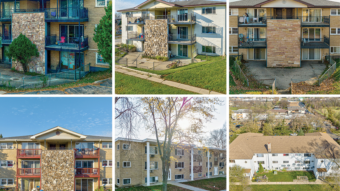Doug Fura, senior vice president in the Southfield, Michigan, office of NAI Farbman, has seen plenty of industrial markets during his long career. Fura, after all, has worked in commercial real estate for more than three decades now.
But no past industrial market is like the one that is challenging Detroit-area developers and tenants today, Fura said.
The challenge? There simply isn’t enough space for industrial users in the Detroit metropolitan area. And new industrial space, largely because it is so expensive, isn’t coming online to meet the demands of these frustrated users.
“In the good old days, as product got absorbed, there was new construction following it,” Fura said. “There was spec construction to handle the customers who needed something reasonably quickly. That isn’t happening today. There are build-to-suit opportunities, but that can be a 12- to 18-month process. Sometimes people don’t have that time.”
This makes today’s Detroit industrial market unique, and one that both developers and tenants are still struggling to navigate.
Users looking for 100,000, 200,000 or more square feet of industrial space? They need to start their searches earlier than ever, Fura said.
“Don’t wait,” he said. “There isn’t much out there. If you are 18 months out from when you need to move? Now is not too early to start looking.”
The problem
Why does the Detroit area face such a shortage of industrial space? Fura points to the days of the Great Recession.
Detroit, of course, was suffering mightily during that time. Fura saw millions of square feet of industrial space – space that wasn’t being used – demolished and sold for scrap.
Demolishing this space made sense back then. In 2005 and 2006, the Detroit area’s industrial market was pumping out 17 million vehicles a year. That fell 9 million vehicles or so during the years of the recession, Fura said.
But today? Detroit is again building 17 million vehicles every year. But the industrial space that was demolished hasn’t come back, he said.
“Now we are seeing the same amount of vehicles being built as we saw before the recession, but there is virtually no spec industrial construction in metropolitan Detroit,” Fura said. “There is not nearly enough to support demand.”
What are manufacturers and other industrial users doing to address this shortage of space? Fura said that many need more space for their growing operations are adding extra production shifts, working nearly around the clock to pump out auto parts, electronics and other products.
Industrial users shouldn’t expect much new spec industrial space to hit the Detroit market any time soon, Fura said. That’s because the cost of building new industrial space is high and many banks are still not yet interested in financing spec construction in the metro area, Fura said.
“It’s a big risk for developers right now,” Fura said. “There is still some uncertainty in the market. It’s tough to tell developers today to reach into their own pockets to put up a spec building. That was more common 10 years ago.”
And when new industrial buildings do hit the market, their higher prices are scaring off some users, Fura said. That’s because new industrial buildings today are about 50 percent more expensive than older, existing industrial buildings.
Fura said that this is a big change from the days before the recession, when new-construction industrial space tended to be about 20 percent to 30 percent more expensive than existing stock.
What can industrial users do if they are struggling to find available space for their growing operations? Fura said that they need to work with an experienced broker who knows their market. And they need to start looking earlier for their space. Those users who are searching for industrial space in the 100,000- to 200,000-square-foot range, especially, need to start their searches about a year-and-a-half before they actually want to move, Fura said.



